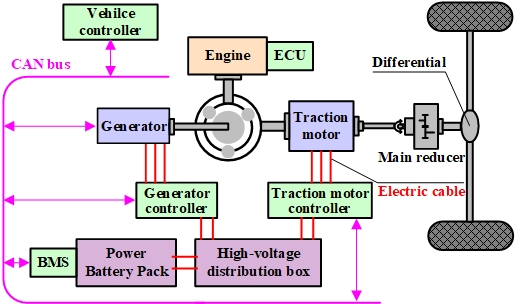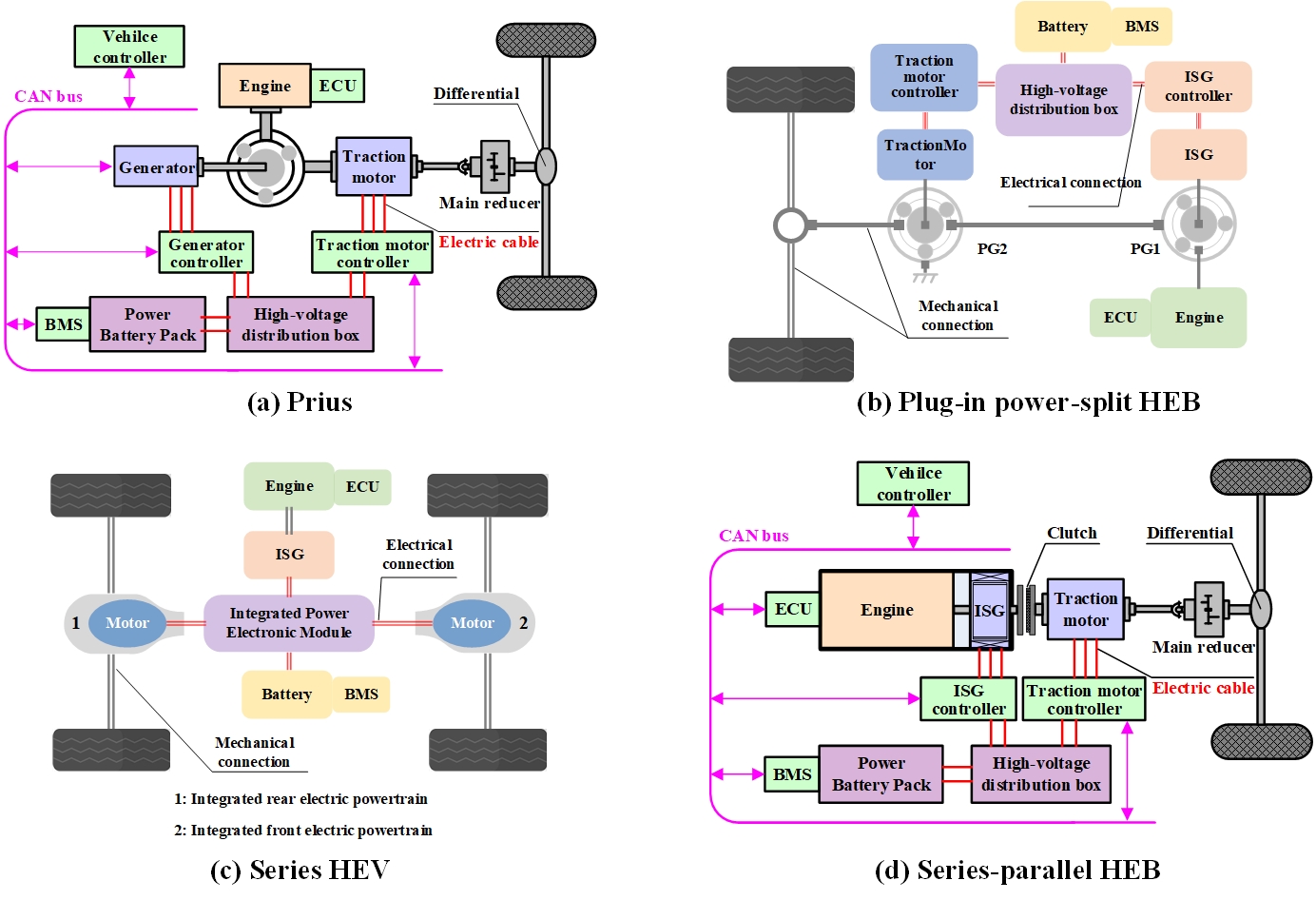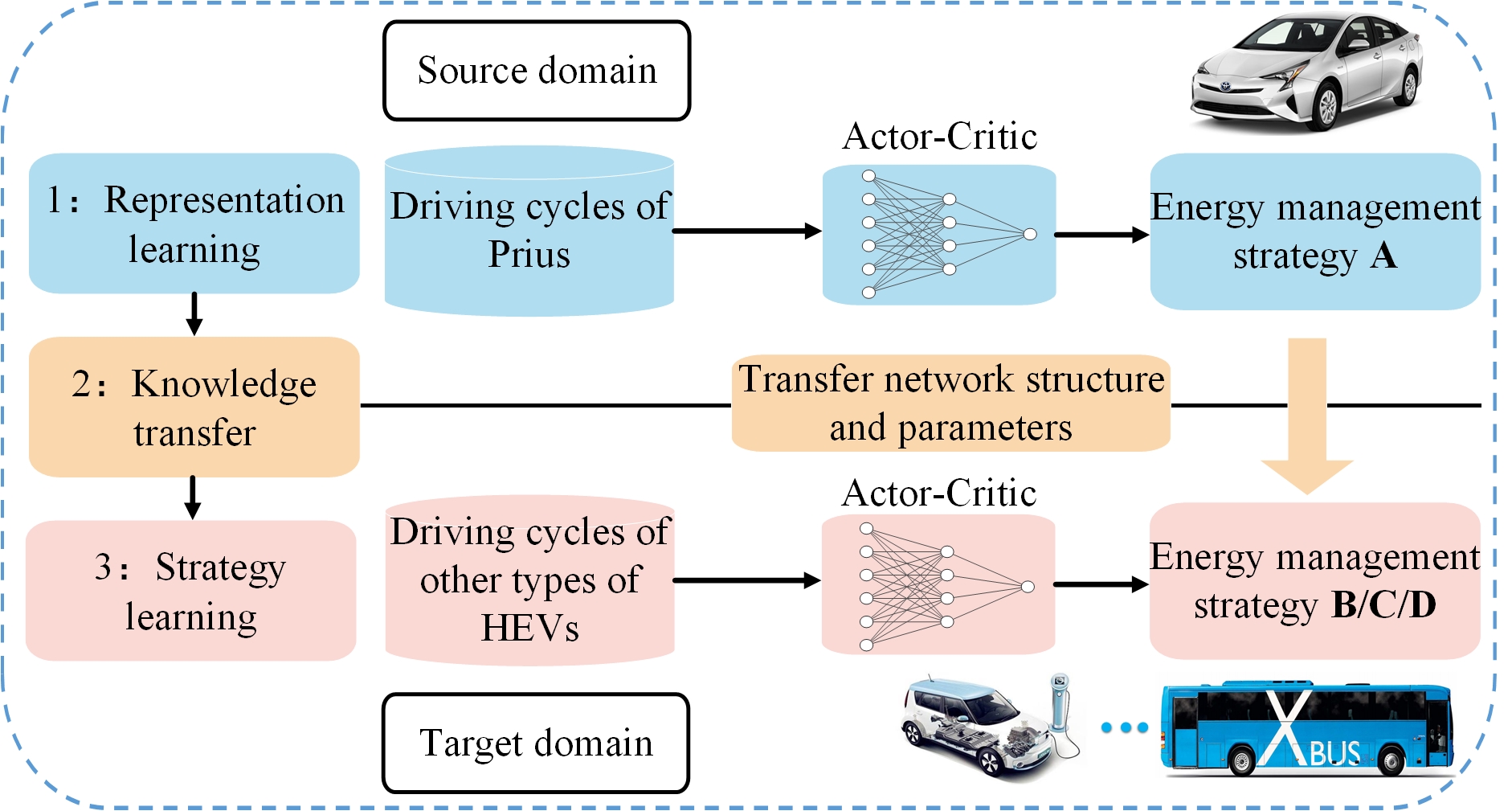Research
Rule-interposing deep reinforcement learning based energy management strategy for power-split hybrid electric vehicle & Code
- A rule-interposing deep reinforcement learning based energy management system is proposed based on a state-of-art DRL algorithm, DDPG;
- Aiming at the fuel economy and learning efficiency of DRL-based EMS, the embedded knowledge is utilized to solve the multi-objective optimization problem and the simplification of large control space;
- Extensive comparative simulations with respect to rule-interposing (RI) DDPG-based EMS and RI DQL-based EMS are conducted and discussed in detail.


Fig. 1. Architecture of Prius powertrain Fig. 2. Agent-environment interaction for HEV energy management
Cross-type transfer for deep reinforcement learning based hybrid electric vehicle energy management & Code
- A novel framework of DRL-based energy management strategy combined with TL is proposed based on a state-of-art DRL algorithm, DDPG.
- In contrast to previous studies that only target to handle the EMS of a single HEV configuration, the proposed framework is utilized to implement EMSs of different types of HEVs. It is not able that this method can significantly shorten the EMS development cycle for different types of HEVs.
- We also study TL between EMSs with different control variables. Interestingly the results show that the learning efficiency of an EMS that controls engine and motor can be improved by knowledge reuse from an EMS that only controls engine.

Fig. 3. Schematic graph of four types of HEV powertrain architecture.

Fig. 4. Sketch map of network-based deep transfer learning.
